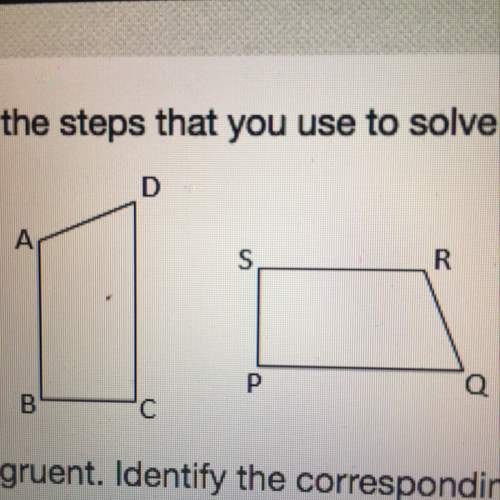
Mathematics, 10.03.2020 08:18 dizzy1111
Use a least squares approximation to find the best linear fit (i. e., the best line) ()=+,L(t)=C+Dt, which is closest, in the sense of least squares, to passing through the through the following data points:
(t1, b1) = (-2, 12)
(t2, b2) = (0,9).
(t3, b3) = (2, 0)
(t4, b4) = (4, -5)
What are the y-intercept and the slope D of this line?

Answers: 3
Another question on Mathematics

Mathematics, 22.06.2019 04:10
Is by a(-4, 2), b(-2, 4), c(1, 3), d(2, 2).of ofto . of d′ if90° to a′b′c′d′ (-2, 2) of c″ if90° to a″b″c″d″ (4, -2) of a′′′ if° to a′′′b′′′c′′′d′′′ (3, -1) of b″ if° to a″b″c″d″ (4, 2)
Answers: 1


Mathematics, 22.06.2019 07:00
Below are statements that can be used to prove that the triangles are similar
Answers: 2

You know the right answer?
Use a least squares approximation to find the best linear fit (i. e., the best line) ()=+,L(t)=C+Dt,...
Questions

Mathematics, 02.10.2019 17:40



History, 02.10.2019 17:40


Mathematics, 02.10.2019 17:40




Mathematics, 02.10.2019 17:40

Mathematics, 02.10.2019 17:40

Arts, 02.10.2019 17:40

Mathematics, 02.10.2019 17:40


Social Studies, 02.10.2019 17:40

Mathematics, 02.10.2019 17:40

Mathematics, 02.10.2019 17:40


Chemistry, 02.10.2019 17:40

 be the best linear fit.
be the best linear fit.

 , has
, has ![A=\left[\begin{array}{cc}1&-2\\1&0\\1&2\\1&4\end{array}\right]](/tpl/images/0540/5901/01751.png) and
and ![b=\left[\begin{array}{c}1&\\9&\\0&\\-5\end{array}\right]](/tpl/images/0540/5901/19451.png)
![A^TA=\left[\begin{array}{cccc}1&1&1&1\\-2&0&2&4\end{array}\right] \left[\begin{array}{cc}1&-2\\1&0\\1&2\\1&4\end{array}\right]=\left[\begin{array}{cc}4&4\\4&24\end{array}\right]](/tpl/images/0540/5901/7327d.png)
![A^Tb=\left[\begin{array}{cccc}1&1&1&1\\-2&0&2&4\end{array}\right] \left[\begin{array}{c}12\\9\\0\\-5\end{array}\right]=\left[\begin{array}{c}16\\4\end{array}\right]](/tpl/images/0540/5901/9df51.png)
![\left[\begin{array}{cc}4&4\\4&24\end{array}\right]\left[\begin{array}{c}C\\D\end{array}\right] =\left[\begin{array}{c}16\\-44\end{array}\right]](/tpl/images/0540/5901/24f0c.png)
![\left[\begin{array}{cc}1&0\\0&1\end{array}\right]\left[\begin{array}{c}C\\D\end{array}\right] =\left[\begin{array}{c}7\\-3\end{array}\right]](/tpl/images/0540/5901/037fd.png)




